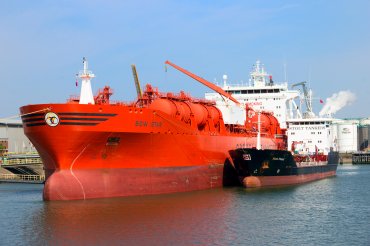
LONDON – Regional imbalances in base oil supply and demand lead to large volumes being shipped all over the globe. The pattern of that trade continually shifts as capacity in different regions evolves, an industry analyst said at an event held here.
“There are major diversities, quite evident in [API] Group II capacity within North America, and particularly evident with Group I in Europe,” Stefano Zehnder, vice president of analytics and consulting for ICIS, said during the ICIS World Base Oils & Lubricants Conference held last month. “On the other hand, Asia is managing a large surplus of capacity in terms of Group II, but particularly in terms of Group III.”
ICIS found Group I base oil net deficits in 2017 of 800,000 tons each for South America and Africa, and of 1.3 million tons for Asia.
North America, with a net surplus of 1.2 million tons, and Europe, with a net surplus of 1 million tons, were the major sources of imported base oils.
Zehnder noted North American suppliers exported base oils primarily into Latin America and Africa. Western Europe supplies the other portion of Africa, and also sends materials towards Asia, where there is a deficit, he said.
The Middle East was relatively neutral on Group I base oil trade in 2017, he said, with a very small net deficit.
ICIS calculated that Europe had a Group II deficit of 900,000 t/y in 2017 – bigger than any other region – which was filled with imports from North America, the Middle East and Asia. That shortfall was wiped away earlier this year, though, when ExxonMobil opened its 1 million t/y Group II plant in Rotterdam, Netherlands.
Meanwhile, North America was a net supplier of Group II base oil in 2017, whereas Asia was essentially flat. “That was a combination of large surplus capacity in northeast Asia – typically [South] Korea – and a deficit position in the southern portion of Asia,“ Zehnder added. “As a balance, that comes up as relatively flat when you look at the total Asia continent.“
The Middle East had a modest Group II base oil surplus of about 350,000 tons in 2017. The regions Group II and III capacity was impacted by the temporary shutdown of the Pearl gas-to-liquids refinery in Qatars Ras Laffan Industrial City in early 2017. Co-owned 50-50 by Shell and Qatar Petroleum in a joint venture, the plant can produce up to 1.1 million metric tons of Group III and 300,000 t/y of Group II base oil.
“When examining the Group II portion of the picture in 2017, its very clear Europe has the biggest deficit when it comes to Group II, fundamentally because of the lack of capacity,“ Zehnder told attendees. Europe’s Group II net deficit in 2017 amounted to about 900,000 tons. Group II base stocks flowed to Europe from North America, the Middle East and Asia.
The Group II landscape is expected to change shape this year as ExxonMobil opens and begins commercial production at its new base stock plant in Rotterdam, marking the opening of Europe’s first large-scale Group II source. The plant – with an estimated Group II capacity of 1 million tons per year – was constructed at a pre-existing fuels refinery and is already producing base oils that are being distributed starting in February to storage terminals, the company stated in a press release. ExxonMobil plans to begin selling those oils during the first quarter.
ICIS projects Group II will become the major base oil grade on a global demand basis out to 2025 – from about 40 percent of global base oil demand in 2017 to around 50 percent in 2040 – while noting that different regional profiles will persist. Group I demand is expected to continue its gradual slide downward over that time, from about a 40 percent share of global base oil demand to around 30 percent.
The company believes Group II demand growth in Europe and Asia will gradually develop new import needs, potentially justifying new investment. Group I production will remain part of the picture in 2025, ICIS expects, though concentrated on higher viscosity grades.
Meanwhile, Group III demand is projected to continue to expand. Should all announced new capacity and full Middle East capabilities take place, the company believes new requirements could be mostly satisfied.
On the Group III side, Asia remained dominant – with a net surplus of 1.32 million tons – because of northeast Asia dominating in terms of base oil trade flows. The main flows are from northeast Asia towards Europe and especially North America, he said.
North America had a net deficit of 900,000 tons in 2017, while Europe’s deficit reached 500,000 tons.
In 2017 the Middle East had a net surplus of about 200,000 metric tons Group III, ICIS found, shipping some of that to Europe. This situation has likely changed starting in 2018, with Abu Dhabi National Oil Co. supplying the European market with its Group III base oils. Adnoc produces some 500,000 tons per year at its plant in Ruwais, United Arab Emirates.